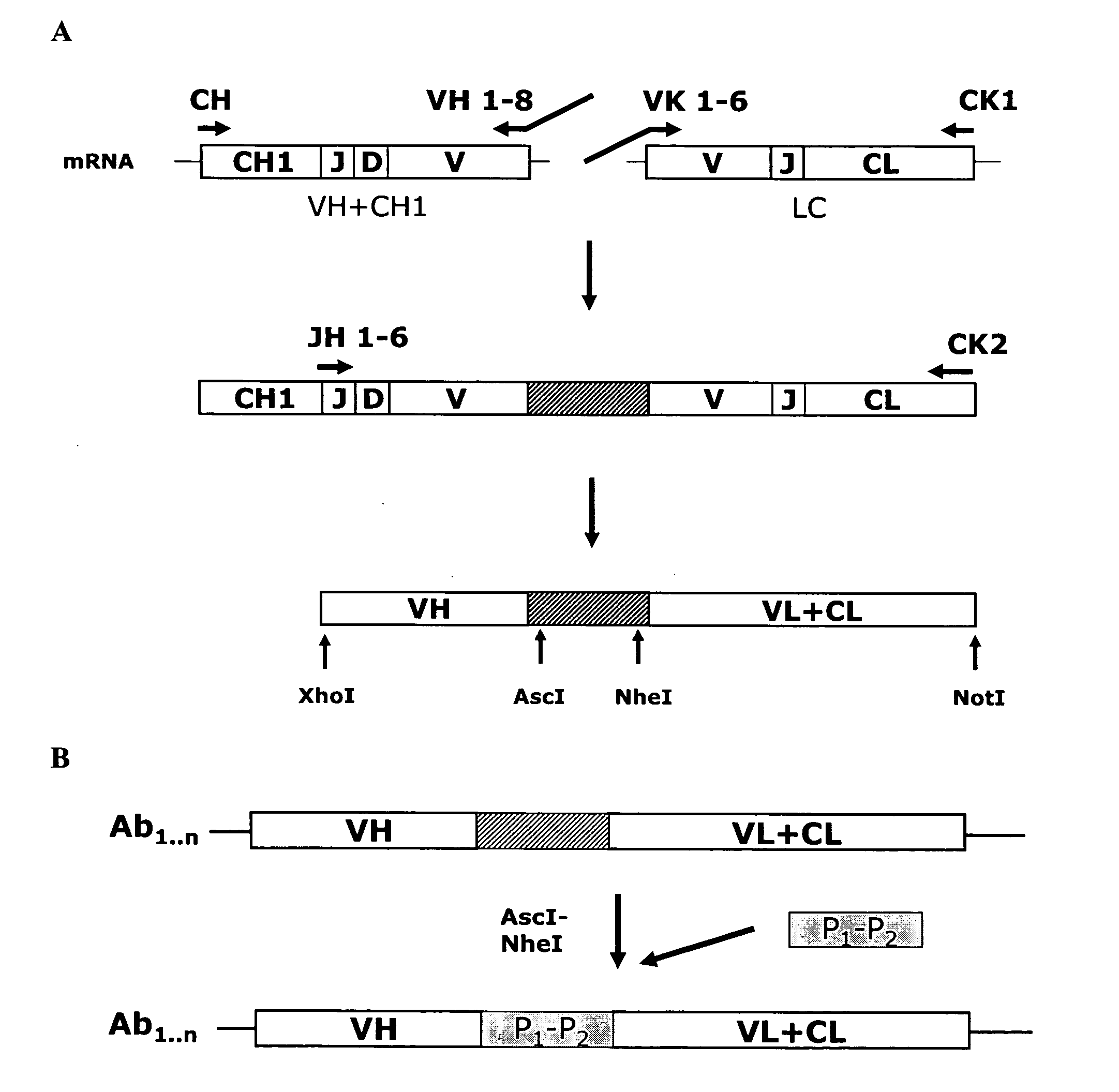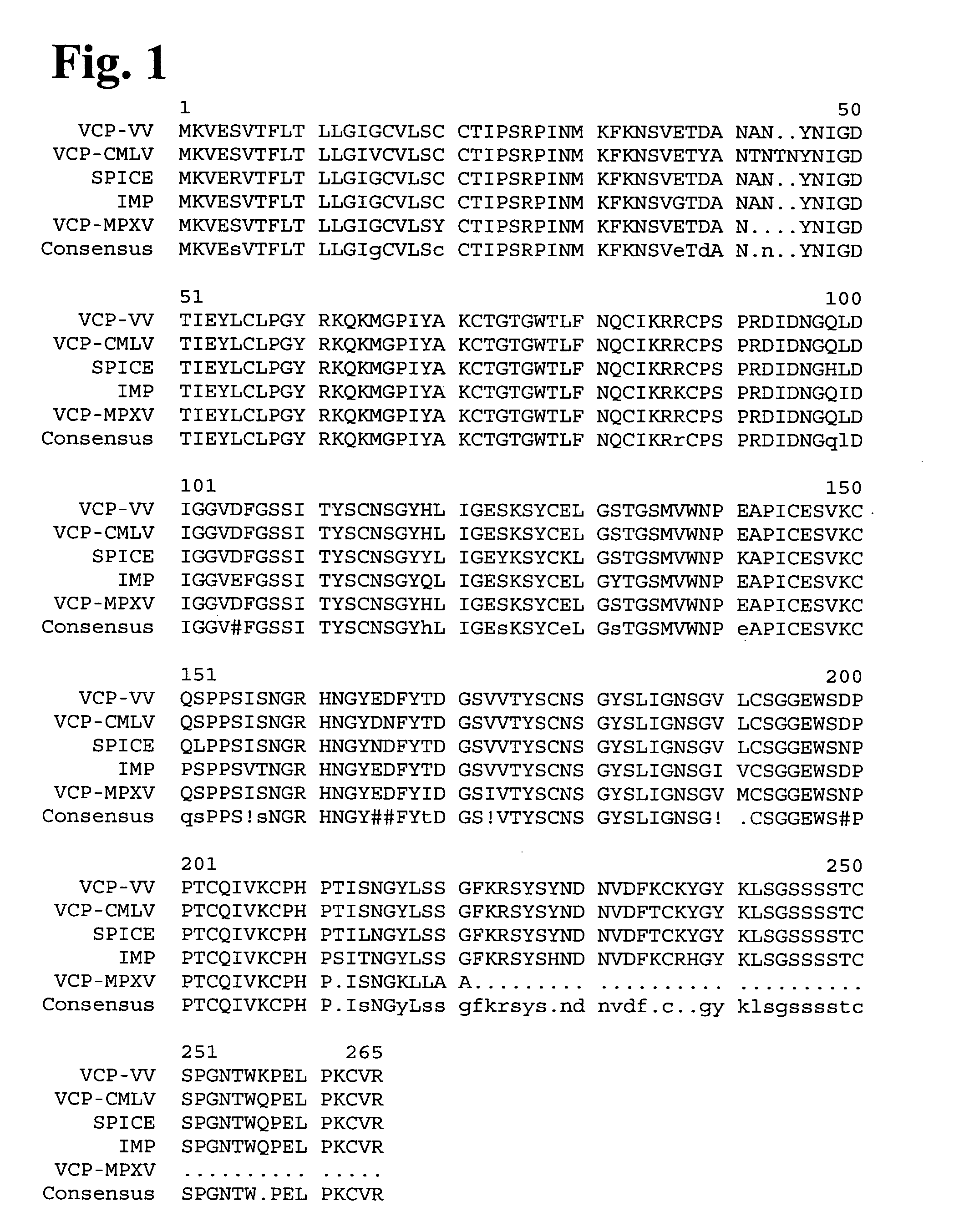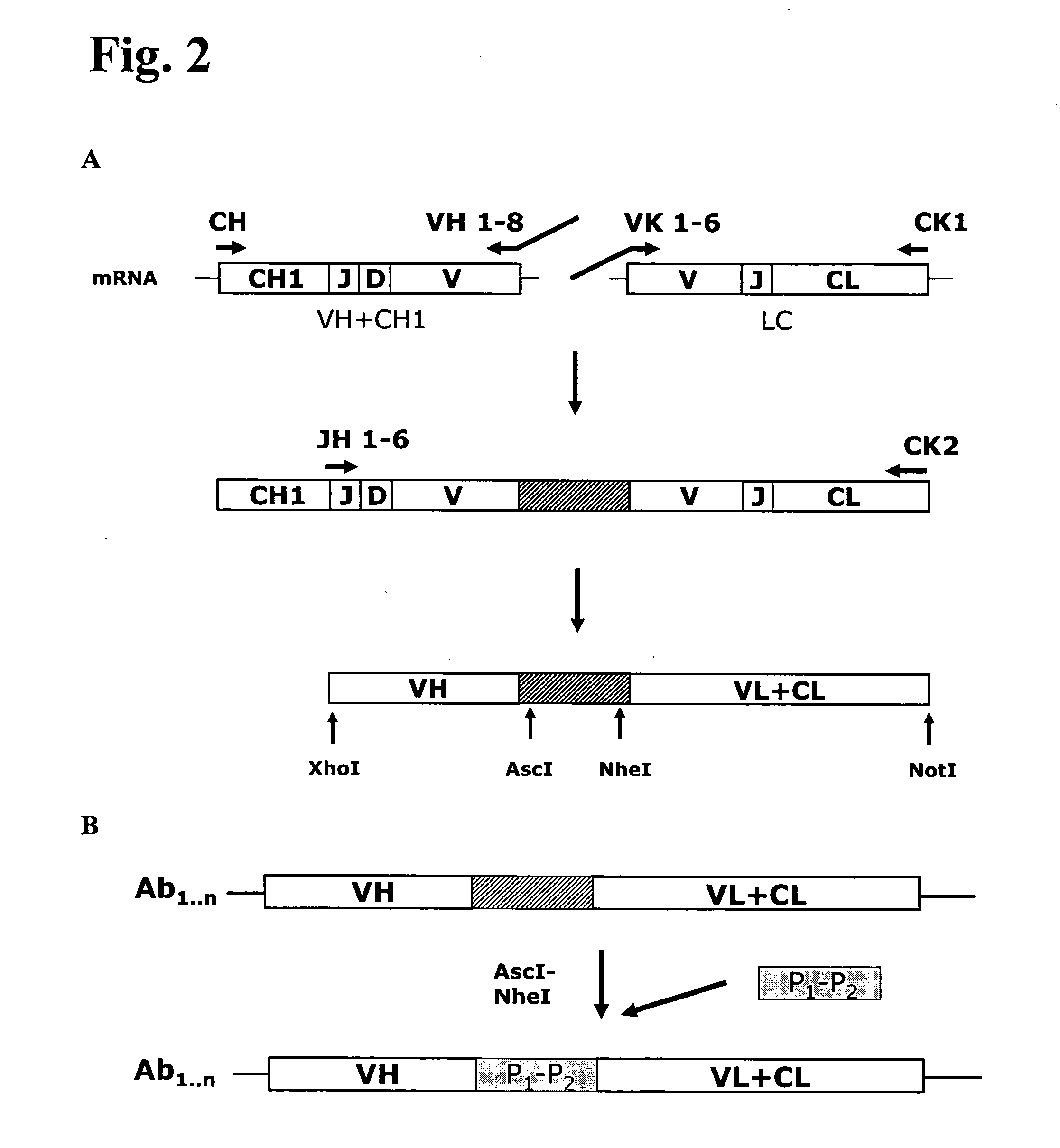Anti-orthopoxvirus recombinant polyclonal antibody
a polyclonal antibody and anti-orthopoxvirus technology, applied in the field of recombinant polyclonal anti-orthopoxvirus antibody, can solve the problems of high risk of viral disease transmission, low specific activity of vig, and large volume of injection
- Summary
- Abstract
- Description
- Claims
- Application Information
AI Technical Summary
Benefits of technology
Problems solved by technology
Method used
Image
Examples
example 1
[0119] This example is a collection of the methods applied to illustrate the present invention.
a. Sorting of Plasma Cells from Donor Blood
[0120] The peripheral blood mononuclear cells (PBMC) were isolated from blood drawn from donors using Lymphoprep (Axis Shield) and gradient centrifugation according to the manufactures instructions. The isolated PBMC were either cryopreserved in FCS; 10% DMSO at −150° C. or used directly. The B cell fraction was labeled with anti-CD19 antibody and isolated from the PBMC fraction using magnetic cell sorting (MACS). The PBMC (1×106 cells) were incubated with anti-CD19-FITC conjugated antibody (BD Pharmingen) for 20 minutes at 4° C. Cells were washed twice in, and resuspended in MACS buffer (Miltenyi Biotec). Anti-FITC MicroBeads (Miltenyi Biotec) were mixed with the labeled cells and incubated for 15 minutes at 4° C. The washing procedure was repeated before the cell-bead suspension was applied to a LS MACS column (Miltenyi Biotec). The CD19 posi...
example 2
[0170] In the present Example the isolation, screening, selection and banking of clones containing cognate VH and VL pairs expressed as Fabs or antibodies with anti-vaccinia virus specificity was illustrated.
Donors
[0171] Twelve donors were recruited from a smallpox vaccination program of British first line responders in collaboration with the Health Protection Agency (HPA), United Kingdom. The donors included both primary and secondary vaccinia virus-immunized individuals. Blood was withdrawn in range of 9 to 21 days after vaccination. The B cell fraction was recovered by anti-CD19 MACS column purification and the sub-population of plasma blasts identified by a CD38high and CD45intermediate cell marker expression profile and single-cell sorted by FACS into 96-well plates as described in section a) of Example 1. The percentages of plasma blasts expressing anti-vaccinia virus antibodies were estimated by ELISpot (Example 1, section b). From 0 to 0.6% of the total plasma cells were ...
example 3
[0182] In the present Example the biological activity of a mixture of monoclonal anti-VV antibodies was compared to a serum derived VIG product.
[0183] The first sixteen individual cell lines introduced into the bank generated in Example 2, were used to express monoclonal antibodies, which where purified, and characterized individually and mixed to generate the Mini-V preliminary antibody composition, a composition which was composed of a mixture of 16 monoclonal antibodies containing the cognate VH and VL pairs corresponding to clone nr 02-029, 02-031, 02-037, 02-058, 02-086, 02-089, 02-112, 02-113, 02-147, 02-156, 02-159, 02-160, 02-169, 02-172, 02-211 and 02-243 of Table 5 in Example 2. The Mini-V composition was produced to resemble a polyclonal antibody product, to verify the biological activity of such a product. In parallel, an oligoclonal composition was compiled consisting of three antibodies specific for IMV antigens as indicated by Western blotting. This oligoclonal antib...
PUM
| Property | Measurement | Unit |
|---|---|---|
| Density | aaaaa | aaaaa |
| Density | aaaaa | aaaaa |
| Density | aaaaa | aaaaa |
Abstract
Description
Claims
Application Information
 Login to View More
Login to View More - R&D
- Intellectual Property
- Life Sciences
- Materials
- Tech Scout
- Unparalleled Data Quality
- Higher Quality Content
- 60% Fewer Hallucinations
Browse by: Latest US Patents, China's latest patents, Technical Efficacy Thesaurus, Application Domain, Technology Topic, Popular Technical Reports.
© 2025 PatSnap. All rights reserved.Legal|Privacy policy|Modern Slavery Act Transparency Statement|Sitemap|About US| Contact US: help@patsnap.com



